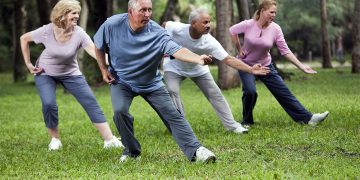Introduction
In the world of fitness, dedication and discipline are often measured by how frequently and intensely one trains. High-intensity workouts, double training sessions, and minimal rest days are sometimes worn as badges of honor. However, there is a critical component of success that many overlook: recovery.
Recovery is not a sign of weakness, nor is it a luxury. It is a biological necessity and a strategic pillar of any effective training program. Without it, the body cannot adapt, improve, or protect itself from injury. Recovery is where growth actually happens—not during the workout itself, but in the time following it.
This article explores the physiological, mental, and emotional dimensions of recovery, the consequences of neglecting it, and the strategies to integrate effective recovery into your lifestyle to ensure lasting results.
Understanding Recovery as a Biological Process
During exercise, the body experiences controlled stress. Resistance training creates microscopic tears in muscle fibers. Cardio workouts place demand on the cardiovascular and respiratory systems. High-intensity interval training (HIIT) taxes both muscular and metabolic systems simultaneously.
Recovery is the period in which the body begins to repair this damage. It replenishes energy stores, removes metabolic waste, rebuilds muscle tissue stronger than before, and restores internal equilibrium. Without sufficient recovery time, the body cannot complete this process, resulting in stagnation or regression.
Several physiological systems are involved in recovery:
- Musculoskeletal system: Repairs muscle tissue and strengthens tendons and ligaments.
- Nervous system: Regains balance after neural fatigue, especially after heavy or complex movements.
- Endocrine system: Regulates hormones involved in muscle repair, fat metabolism, and stress response.
- Immune system: Manages inflammation, facilitates repair, and defends against illness or injury.
- Cardiovascular system: Returns heart rate and blood pressure to baseline and enhances circulation efficiency.
Proper recovery ensures these systems can adapt and perform better over time.
Consequences of Ignoring Recovery
Failing to prioritize recovery disrupts this adaptive cycle. Many individuals, especially those new to training or driven by ambitious goals, believe that more training equates to faster results. This mindset can lead to chronic fatigue, decreased performance, and a higher likelihood of injury.
Decline in Physical Performance
When the body is not given adequate time to recover, performance begins to decline. Workouts that once felt manageable become harder. Strength levels plateau or drop. Endurance wanes. This is not due to lack of effort, but because the body remains in a state of fatigue and stress.
Elevated Risk of Injury
Overtraining places chronic strain on joints, tendons, and muscles. Repetitive stress without rest prevents tissue repair and increases the likelihood of overuse injuries such as tendonitis, stress fractures, and joint inflammation. Inadequate recovery also reduces coordination and focus, raising the risk of acute injuries during training.
Hormonal Imbalances
Cortisol, the body’s primary stress hormone, remains elevated under prolonged training stress. At the same time, anabolic hormones like testosterone and growth hormone decrease. This imbalance interferes with muscle growth, sleep quality, and fat metabolism. Over time, it may lead to systemic fatigue and immune suppression.
Mental and Emotional Burnout
Fitness is not only physical—it requires psychological resilience. Without rest, motivation begins to fade. Workouts feel like obligations rather than energizing experiences. Mood may deteriorate, and symptoms of anxiety, irritability, and depression can emerge. What begins as physical stress translates into emotional exhaustion.
Components of Effective Recovery
A successful recovery strategy addresses the needs of both body and mind. It includes intentional rest periods, active movement, nutrition, hydration, sleep, and stress management.
Sleep
Sleep is the foundation of recovery. During sleep, the body produces hormones like growth hormone, which play a central role in muscle repair, fat loss, and immune function. Sleep also allows the brain to reset, improving mental clarity and emotional stability.
Adults should aim for 7–9 hours of quality sleep each night. Sleep deprivation impairs performance, increases inflammation, and slows down recovery. Establishing a consistent sleep schedule and minimizing screen exposure before bed can significantly enhance sleep quality.
Nutrition
What you eat before, during, and after your workouts directly influences your recovery. Protein provides the amino acids necessary for muscle repair. Carbohydrates replenish glycogen stores depleted during training. Healthy fats support hormone production and inflammation control.
Hydration is equally vital. Water facilitates nutrient transport, regulates body temperature, and supports joint lubrication. Electrolytes such as sodium, potassium, and magnesium maintain muscular function and fluid balance.
Nutrient timing can further support recovery. Consuming a balanced post-workout meal within 30–90 minutes after exercise helps accelerate repair and restore energy.
Active Recovery
Rest doesn’t always mean complete inactivity. Active recovery involves low-intensity movement that promotes blood flow without adding stress. Activities like walking, stretching, yoga, swimming, or light cycling enhance circulation, reduce muscle stiffness, and support metabolic recovery.
Active recovery is especially useful the day after a particularly intense session. It helps keep the body mobile and engaged while allowing internal systems to restore themselves gradually.

Rest Days
Strategically planned rest days are necessary to prevent overtraining and promote long-term consistency. These are periods of full rest where the body can reset completely. Rest days are also a psychological reset, reducing mental fatigue and restoring motivation.
Depending on training volume and intensity, most individuals benefit from at least one or two rest days per week.
Mobility and Soft Tissue Work
Self-myofascial release (e.g., foam rolling), dynamic stretching, and mobility exercises help reduce muscle tightness, improve range of motion, and prevent compensation patterns that can lead to injury. These techniques are especially useful for athletes, weightlifters, and individuals with physically demanding routines.
Recovery as a Strategic Investment
Recovery should not be viewed as lost time. It is a necessary investment in longevity, performance, and well-being. The most successful athletes and fitness professionals don’t just train harder—they recover smarter.
A well-recovered body performs better, feels better, and is far more resilient to the physical and emotional demands of training. Neglecting recovery compromises not only results but also health and sustainability.
Conclusion
Progress in fitness is not determined solely by the number of hours spent lifting weights or running laps. It is a result of how effectively the body adapts to training stimuli—and that adaptation only happens when the body is given time, resources, and space to recover.
Incorporating proper recovery practices—sleep, nutrition, rest days, hydration, and stress management—is not optional. It is essential. Without it, even the best-designed workout programs will fail to deliver long-term benefits.
Sustainable fitness is not built on exhaustion, but on balance. Recovery is the bridge between effort and progress. Prioritizing it is not a sign of weakness—it is a sign of wisdom.

















































